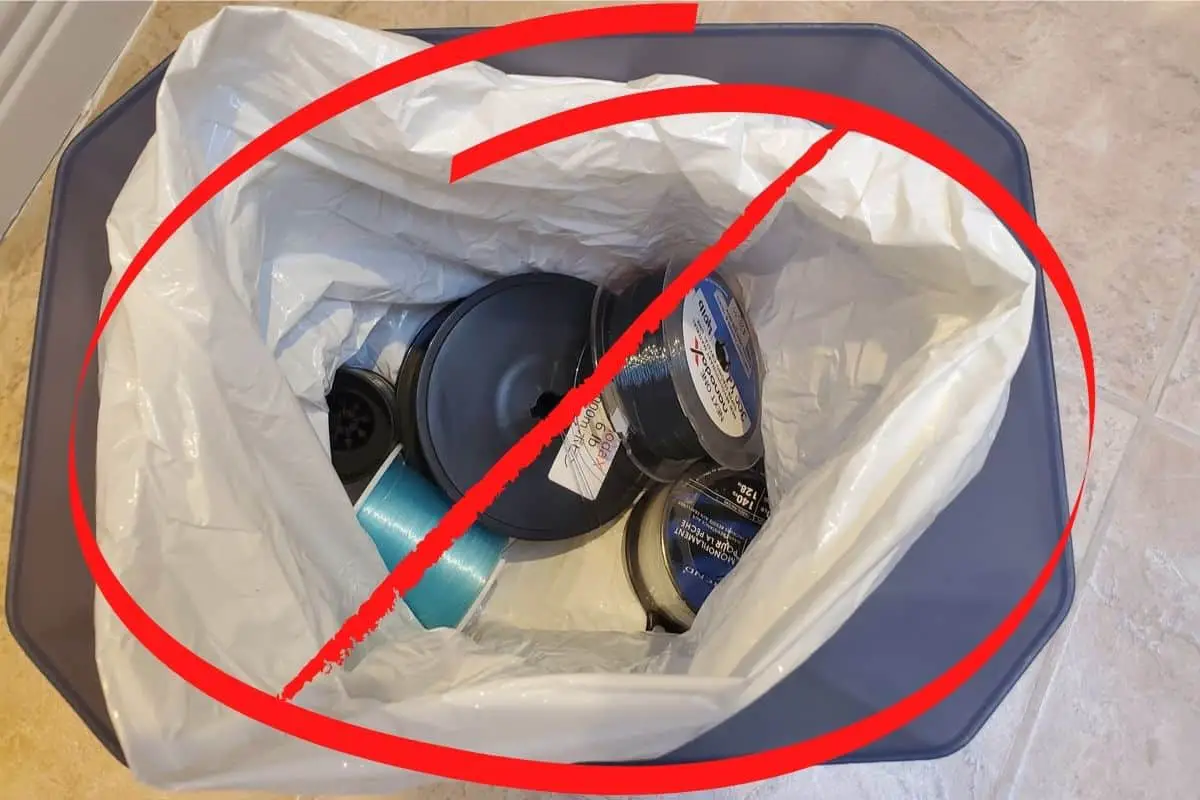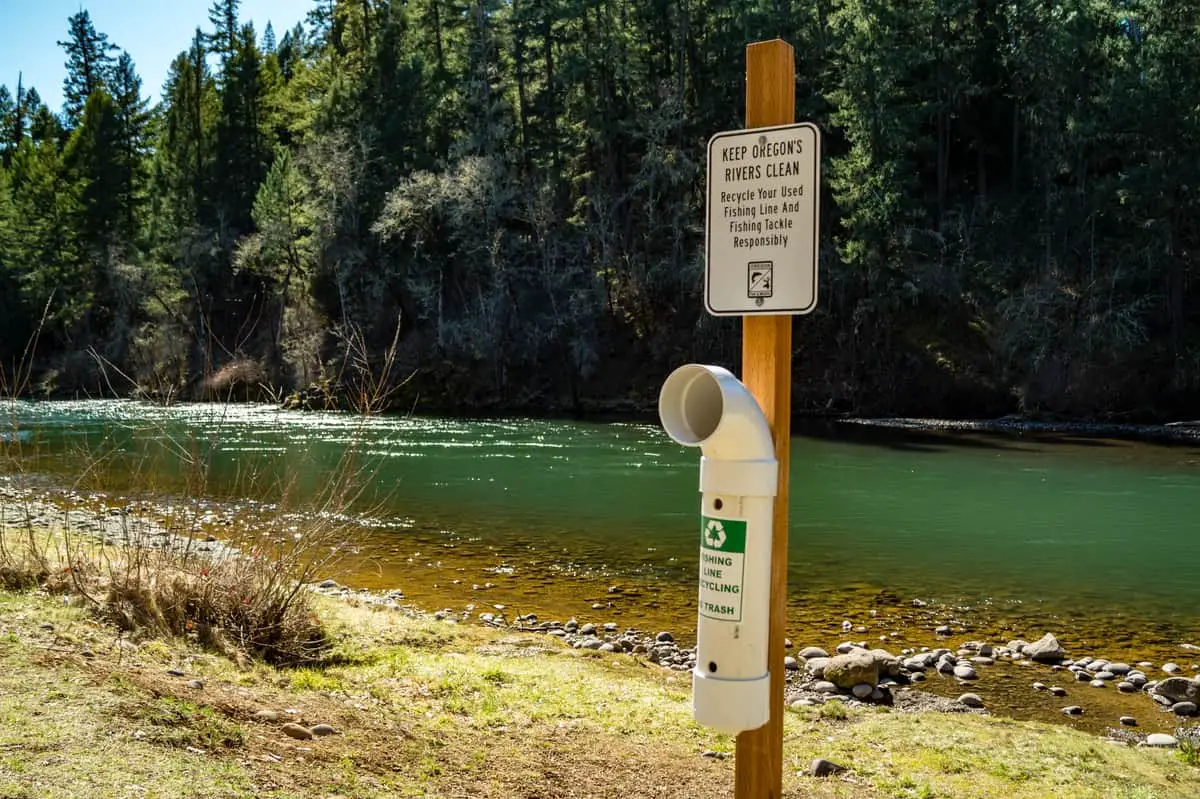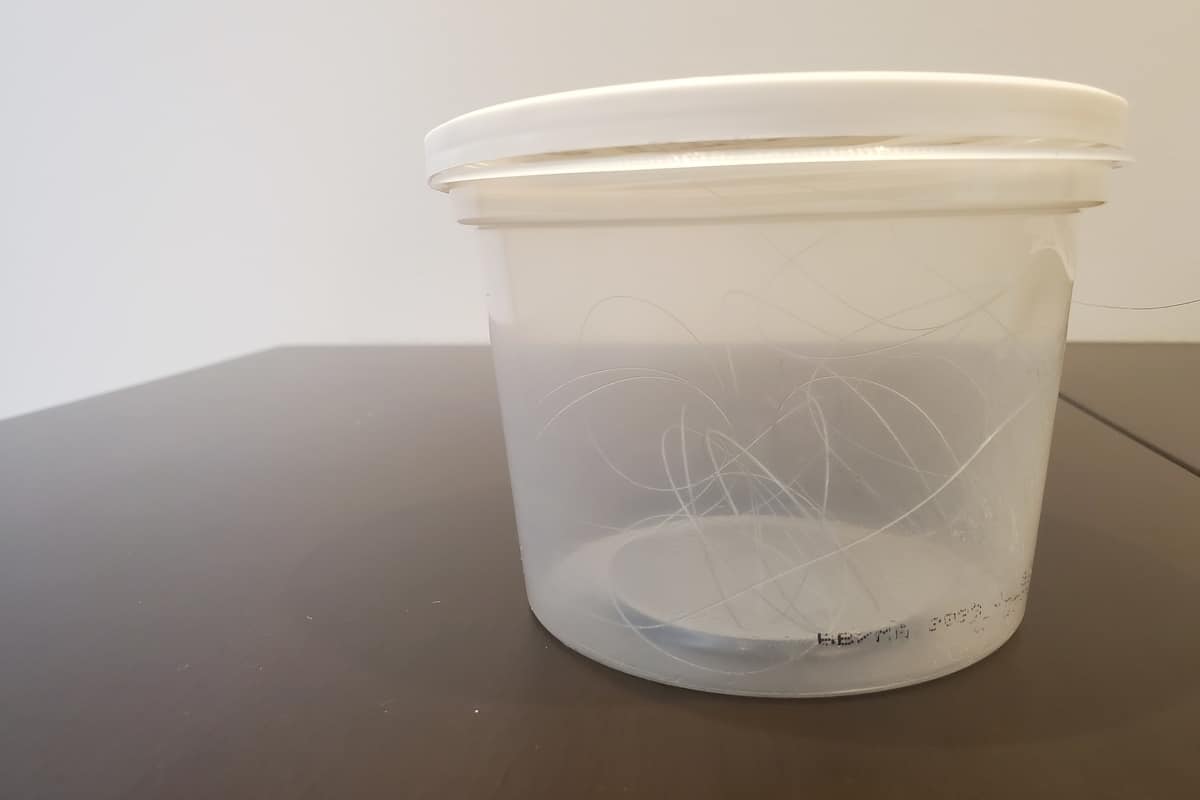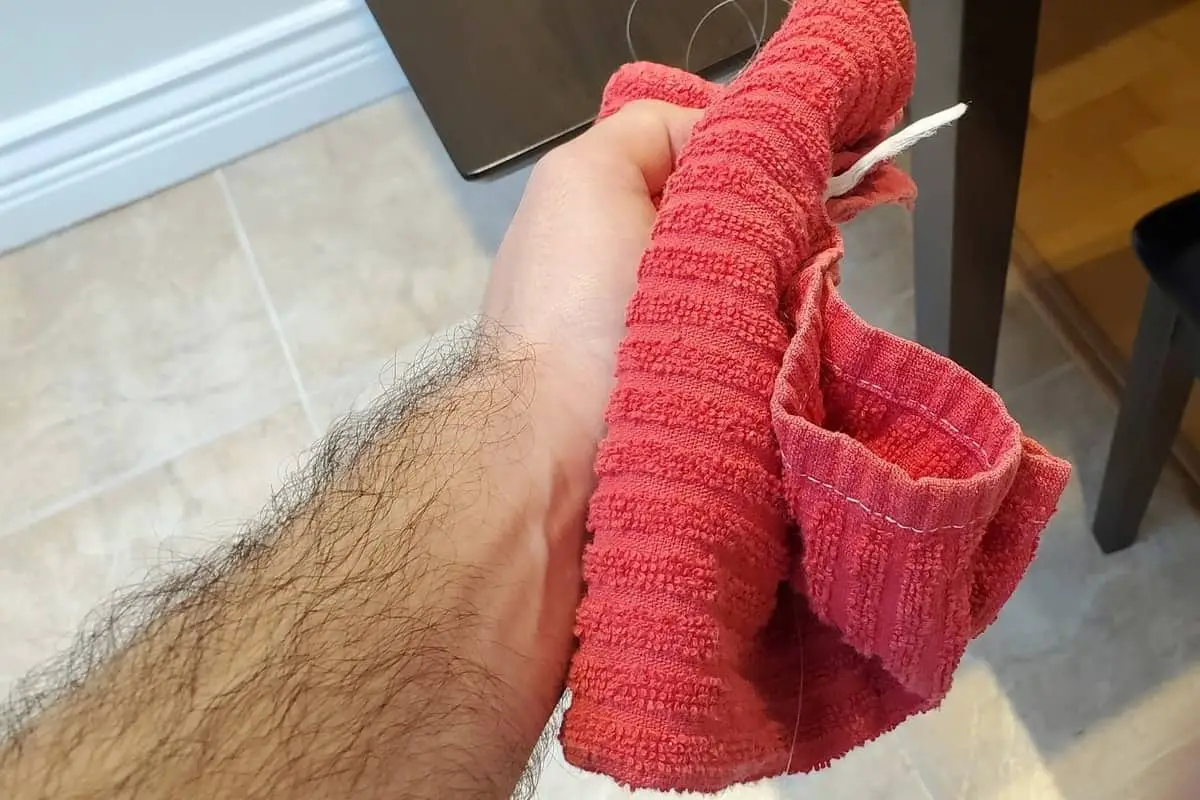
At one point or another, every angler will have to deal with disposing of old fishing. Properly disposing of old fishing line is vital to help protect the environment and wildlife. Unfortunately, disposing of old fishing line is not as simple as throwing it in the garbage.

Did You Know:
It takes 600 years for monofilament fishing line to decompose in the environment.
This’s why it’s essential to understand how to dispose of old fishing line properly.
So, how do you dispose of old fishing line? Cut your fishing line into 6-12 inch segments and place in a container with a lid before throwing it in the garbage. Monofilament and Fluorocarbon fishing line has a special recycling program, check your participating local tackle stores. Don’t recycle fishing line with other household items. Braided lines are not recyclable.
It’s important to understand that your old fishing line can not be recycled along with your other household products. The material that fishing lines are made up of requires a unique process to recycle fishing line.
Even More, Locations Where You Can Send Your Fishing Line For Recycling!

Not all local tackle stores are equipped to receive fishing line for recycling. So, if your local store does not accept fishing line for recycling it should not mean you can’t recycle it.
Recycling fishing line has become an industry-wide initiative with partnerships with many local governments. There are many designated collection stations located near popular fishing and boating spots.
You can place your fishing line inside these designated fishing line collection stations. A government or park worker will empty these stations and send the fishing line to the proper recycling facility.
You can find these collection stations at:
- Bait Stores
- Tackle Stores
- Boat Ramps
- Marinas
- Popular fishing spots
If you haven’t seen these collection stations where you typically fish and want to recycle your fishing. Give a call to your local wildlife department. They can direct you to where the nearest collection station is located.
Another Option, Send Your Fishing Line Directly To Berkley!
If, for whatever reason, you can’t get to a fishing line recycling collection station but still want to recycle your fishing line. Don’t worry, I got you covered. Well, that is … Berkley got you covered.
Berkley has a long history when it comes to fishing lines. They were one of the first to develop monofilament fishing lines over 60 years ago. And they are continuing with that legacy by being the industry leader in recycling fishing line.
As part of their program, they have made it easy for anyone to recycle their fishing line. You can send Berkley your fishing line for recycling directly to their recycling facility.
Berkley Recycling Center
1900 18th Street
Spirit Lake, Iowa 51360
If you want to read more about Berkley’s recycling program, check out their website.
How to Send Fishing Line To Berkley?

To send your fishing line to Berkley is similar to how you would send a package to someone through the post office.
First, you need to place your fishing line in some sort of container. I personally like using an empty coffee container, but anything with a secured lid will work.
Second, head to your post office with the container filled with your fishing line and Berkley’s address shown above.
Your local post office will help you with the rest.

Did You Know:
Berkley has recycled over 9 million miles of fishing line since 1990. That`s enough line to make 18 round trips to the moon!!!
How to Prepare Your Fishing Line For Recycling
Now at this point, if your excited to do your part to protect the environment by recycling your fishing line. Then there’re a few things you need to do.
Remove all tackle like swivels and hooks from the line: Because the facility can recycle your fishing line does not mean it can recycle other tackle. Nor do they want your additional tackle shipped to them.
These facilities are designed to ONLY handle monofilament and fluorocarbon fishing lines. Tackle like hooks and swivels should be disposed of separately. Not to mention, throwing in hooks is a great way for people who collects the fishing line at the collection station to get hurt.
So, no tackle should be put in the collection station. Only Fishing Line!
No plant growth on the lines: The fishing line’s recycling process is not as efficient when there’s plant growth on the lines. That’s because the organic growth on the fishing line is NOT RECYCLABLE.
This will not only affect how your line is recycled, but it will affect the whole batch of fishing lines that will be recycled at the plant.
But you can do your part to help with this. As you are unspooling your reel to dispose of the old fishing line and you see some growth. Or perhaps you want to make sure you do everything possible to improve the recycling process. I would recommend wrapping a hot cloth around the fishing and pull it through the cloth to remove as much growth as possible.

How To Dispose Of Braid Fishing Line?
Up to this point, we’ve been talking about how to dispose of your old monofilament and fluorocarbon fishing lines. But there are many anglers out there that use braid fishing lines, wondering how to properly dispose of braided fishing.
Like we’ve mentioned before, braided fishing line is not recyclable. But there are ways to properly dispose of braided fishing line to reduce the environment’s impact.
Ask Your Local Tackle Store If They Dispose Of Braided Fishing Line.
Many tackle stores that offer monofilament fishing line recycling bins or respooling services will also accept braid fishing lines too to be properly disposed of.
When At Home, Cut Into Small Segments
If you’re at home and you need to dispose of some old braid fishing line, what you can do is cut them into 6-12 inch long segments and put it in a container with a lid before throwing it in the trash.
If the segments are too long, wildlife like birds can get tangled in them. If they are too short, wildlife could eat it thinking it was food. 6-12 inch long segments were found to be a good medium.
Putting the fishing line in a container with a lid which prevents the segments from spreading about in the landfill.
Sending your fishing line to a landfill keeps the fishing line out of the environment protected from as many animals as possible.
You can do this with any type of fishing line, but recycle the fishing lines that can be recycled whenever possible.
Why Are Certain Types Of Fishing Lines Recyclable But Not Others?
We’ve been talking a lot about which fishing lines are recyclable and which ones are not. But we have not discussed why that’s the case.
Monofilament and Fluorocarbon lines are made from a single strand of plastic. Monofilament lines are typical made from a single strand of Nylon or a mixture of different polymers. Whereas Fluorocarbon is made up of a single strand of a polymer called Polyvinylidene Fluoride.
You don’t need to remember the names. All you need to know these are recyclable because of the material and how the lines were manufactured.
When it comes to braided fishing lines, things become more interesting. Braided fishing lines come in 3 common different types:
- Dacron – made from Polyethylene terephthalate
- Spectra – made from Ultra-high-molecular-weight polyethylene
- Dyneema – made from Ultra-high-molecular-weight polyethylene
Some of the base materials used to produce braid lines are recyclable. But due to the manufacturing process and chemical additives can prevent these lines from being recyclable.
Hopefully, in the future, this will change, and more environmentally friendly options become available.
What’s The Environmental Impact From Stranded Fishing Line
I think we have all seen the effects of fishing line being tangled in fishing line. It’s sad and not pretty.
Everything from Birds to seals … fish to turtles can get tangled in fishing line. If they are not helped, they will die from starvation because they can’t move, cuts because the line can cut into their skin, or lack blood circulation.
There are reports of animals like fish, seals, turtles, whales, and sharks that have eaten mass amounts of fishing line, causing them to die. Fishing line doesn’t break down or pass through their digestive tract. So the bits of fishing line will remain in their stomachs and build up over time. If the animal eats enough fishing line, it can prevent them from eating, which causes them to slowly starve.
We Need To Do Our Part
Many of us love to fish for many different reasons. Whether that be for enjoyment, relaxation, or having the excitement of landing a monster.
No matter what your reason is, to continue fishing, we need to do our part to protect the environment. And that all starts with properly disposing of your old fishing line and recycling what you can.
We all share the waters together, so let’s protect it together!
Happy Fishing and Tight Lines!
